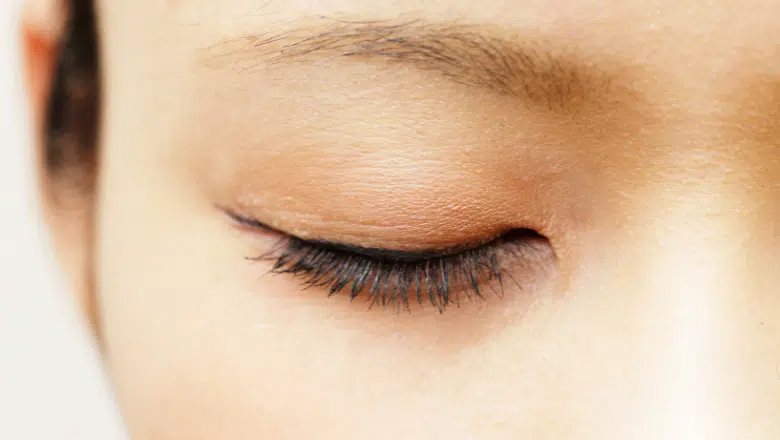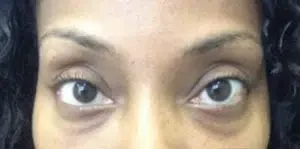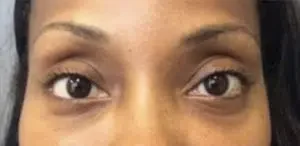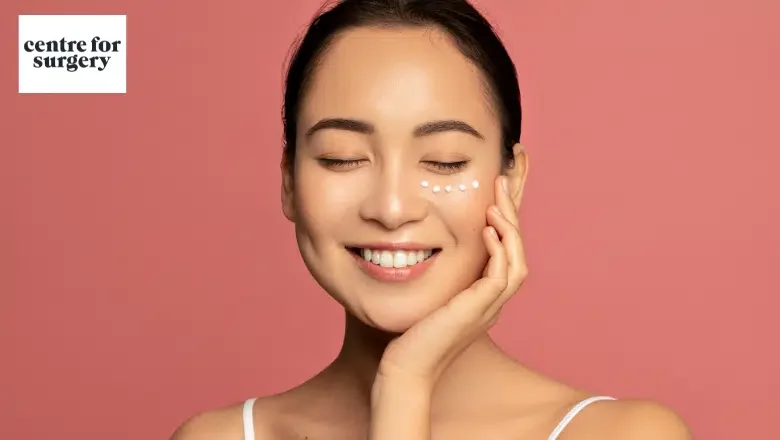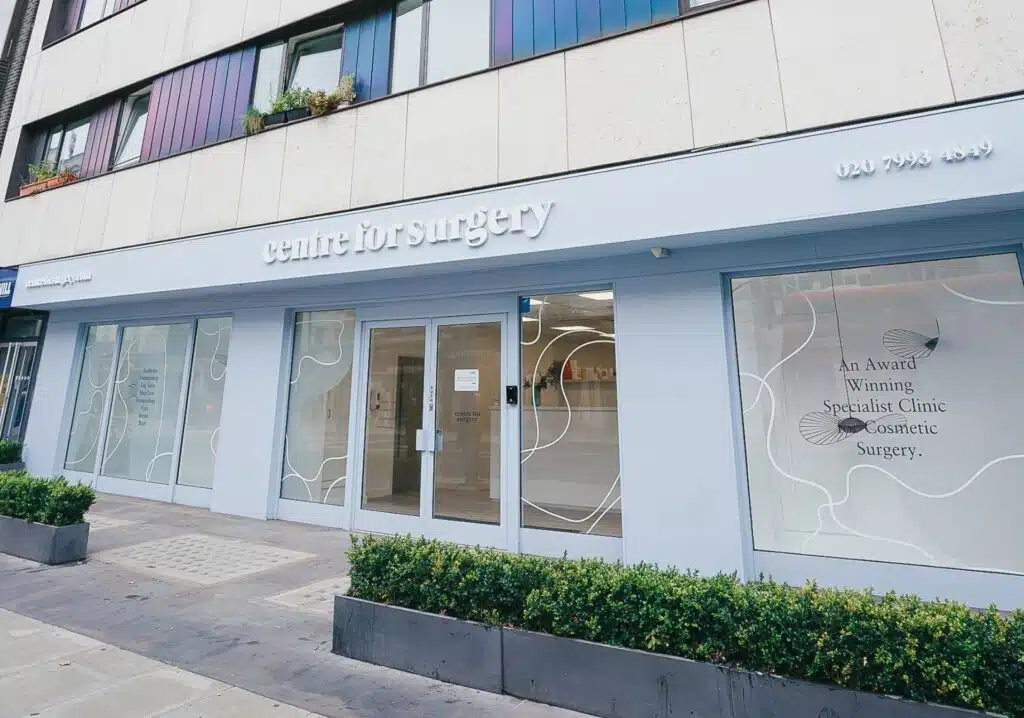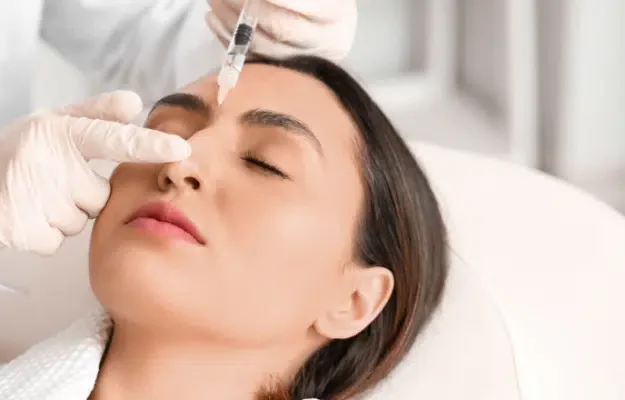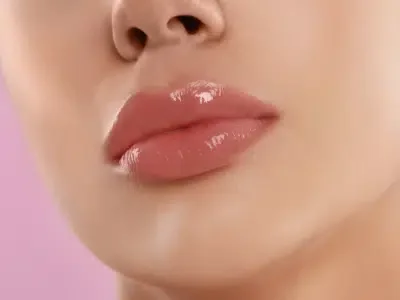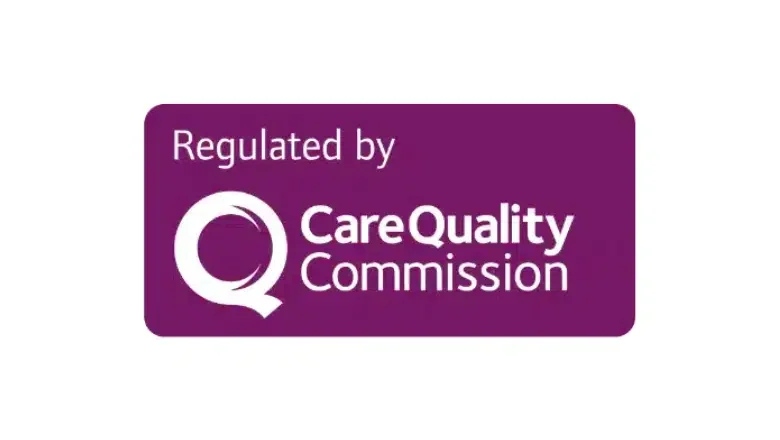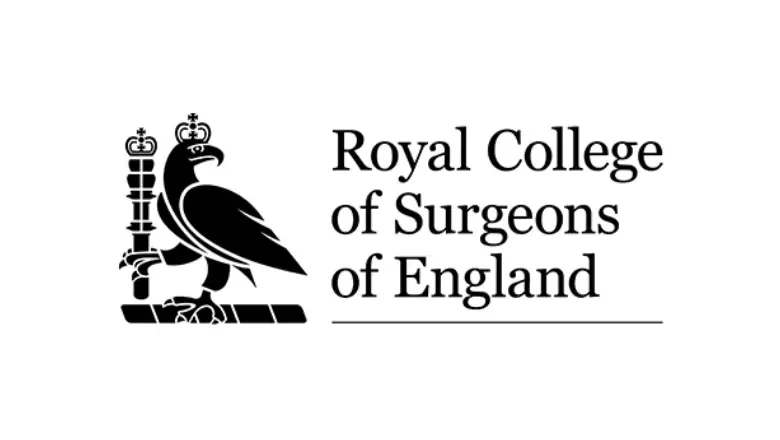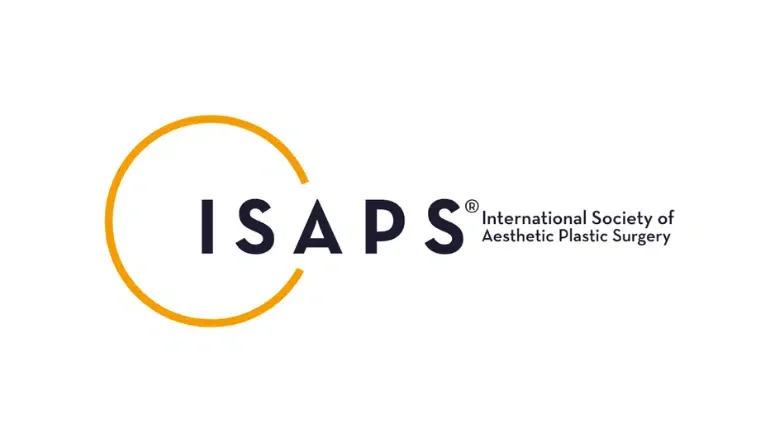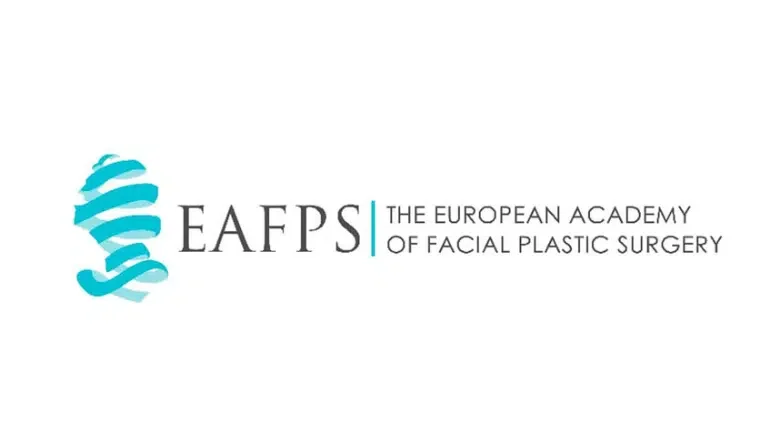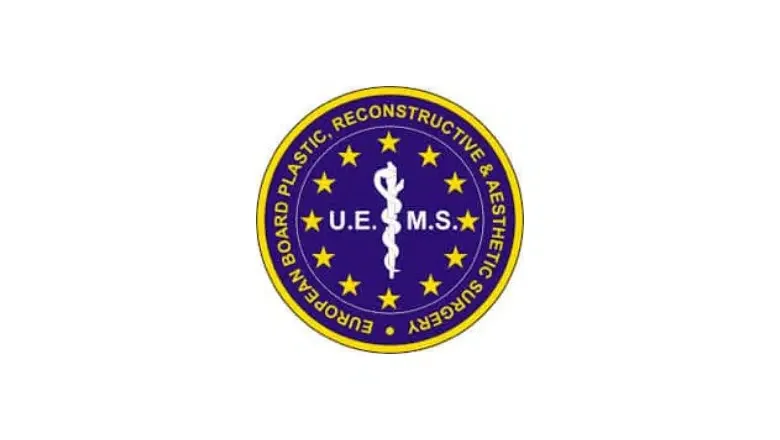Tear Trough Filler in London
The area beneath our eyes, often referred to as the tear trough, is a delicate and vital part of our facial aesthetics. Many individuals find that with age, fatigue, or due to genetic factors, this area can develop a range of concerns such as dark circles, hollowness, and the emergence of fine lines and wrinkles. These changes can often make a person appear more tired or older than they actually are, impacting their overall appearance.
Tear trough fillers have emerged as a popular solution to these issues. These dermal fillers offer a safe and effective method for enhancing the under-eye region. The primary objective of using these fillers is to introduce additional volume to this area. This added volume plays a crucial role in smoothing out any fine lines and wrinkles that have formed. Moreover, it significantly reduces the appearance of hollowness and dark circles under the eyes, contributing to a more refreshed and youthful look.
RELATED: Why Under Eye Filler is Not For Everyone
The procedure involving tear trough fillers is typically straightforward and is admired for its ability to produce immediate and noticeable improvements. By addressing the root causes of under-eye concerns such as volume loss and skin laxity, these fillers provide a rejuvenating effect. It’s a transformative approach beyond superficial treatments, offering a deeper restoration of the under-eye area’s youthful contours and brightness.
Tear trough filler, or under eye filler, is a commonly performed anti-ageing treatment at Centre for Surgery in London.
The tear trough area is the inner part of the lower eyelid, also known as the nasojugal groove. With ageing, fat gradually decreases in the lower eyelid and adjacent upper cheek region. A loss of collagen and elastin causes the skin and muscles in the lower eyelid to lose their underlying structural support. Eventually, the changes caused by the loosening of the soft tissue attachments cause the tear trough area to become swollen and appear protruding. With prolapse of the underlying tissues, the formation of eye bags occurs. Dark shadows develop, and these can give rise to the appearance of dark circles under the eyes. Despite the use of make-up, the face can still appear tired. Using dermal fillers to rejuvenate the tear trough region is a highly effective treatment for facial rejuvenation in both men and women.
RELATED: Under Eye Fillers – Are Tear Trough Injections Worth It?
What Are Tear Troughs?
Tear trough deformity, also known as under-eye hollows, is a common cosmetic concern characterised by a hollow, sunken appearance under the eyes. It is caused by a loss of volume and thinning of the skin and soft tissues in the under-eye area, resulting in a depression or groove that extends from the inner corner of the eye to the mid-cheek.
RELATED: Sunken Eyes – Causes & Treatments
Tear trough deformity can be genetic or age-related, and it can affect individuals of all ages and skin types. It can make a person look tired, haggard, or older than their actual age, even if they are well-rested and healthy.
While tear trough deformity can be challenging to treat, there are several non-surgical options available, such as tear trough filler injections. The filler is injected into the under-eye area to add volume and fill in the hollows, resulting in a smoother and more youthful appearance.
In addition to filler injections, other non-surgical options for tear trough deformity include chemical peels, laser resurfacing, and microneedling. However, these treatments may not be as effective as filler injections and may require multiple sessions to achieve optimal results.
For severe cases of tear trough deformity, lower blepharoplasty, a surgical procedure to remove excess skin and fat from the lower eyelids, may be necessary to achieve the desired results. It’s essential to consult with an experienced and qualified plastic surgeon to determine the best treatment option for your specific needs and concerns.
Expected Results after Tear Trough Injections
- Reduced appearance of dark circles under the eyes
- Reduced hollow appearance beneath the eyes
- Reduced appearance of eye bags
- A more refreshed and revitalised appearance
Causes of tear trough deformity
Tear trough deformity refers to a sunken, hollow appearance under the eyes that can make a person look tired or older. The following are some of the common causes of tear trough deformity:
Ageing
As we age, the skin and soft tissues around the eyes start to lose elasticity and volume, making the tear trough area appear hollow and sunken.
Genetics
Some people are born with a predisposition to a deep tear trough, which can become more pronounced as they age.
Sun damage
Prolonged exposure to the sun can damage the skin and lead to the development of wrinkles, fine lines, and a hollow tear trough.
Weight loss
Rapid weight loss or fluctuations in weight can cause loss of volume in the face, including the tear trough area.
Poor diet and lifestyle factors
A poor diet, lack of sleep, dehydration, and stress can all contribute to the formation of a tear trough deformity.
Medical conditions
Certain medical conditions, such as allergies, sinus problems, or thyroid issues, can also cause the tear trough area to become more pronounced.
Anatomical factors
Some individuals have an anatomical predisposition to a deep tear trough due to the shape of their skull and facial bones.
What Is Tear Trough Filler?
Tear trough filler treatments are specifically designed to revitalise the appearance of the under-eye region. This area is particularly prone to showing signs of ageing or fatigue, often manifesting as hollowness, dark circles, and the presence of lines and wrinkles. These aesthetic concerns can significantly affect the overall appearance of one’s face, lending a tired or aged look.
RELATED: How to Get Rid of Eye Bags
The primary approach in these treatments involves the use of specialised fillers. These fillers are meticulously injected into the tear trough, the area just beneath the lower eyelid and above the cheek. Their primary function is to restore lost volume in this region, which is a common consequence of ageing or genetic predisposition. By adding volume, the fillers effectively smooth out the under-eye area, mitigating the appearance of deep hollows and dark circles.
Additionally, these fillers play a crucial role in softening the appearance of fine lines and wrinkles. They provide a subtle lift and firmness to the skin, contributing to a more youthful and refreshed look. The result is a smoother, more even under-eye area that enhances the overall facial aesthetic.
Benefits Of Tear Trough Fillers
Tear trough fillers have become a popular non-surgical cosmetic treatment for addressing dark circles and bags under the eyes. Some of the key benefits of tear trough fillers include:
Improved Appearance
One of the most significant benefits of tear trough fillers is that they can dramatically improve the appearance of dark circles and bags under the eyes. By filling in the hollows and reducing the shadows, tear trough fillers can create a more refreshed and youthful look.
Non-Surgical
Tear trough fillers are a non-surgical treatment, meaning that they don’t require incisions or general anaesthesia. This means that there is minimal downtime and patients can resume normal activities immediately after treatment.
Quick Procedure
The tear trough filler treatment is typically a quick procedure that can be completed in less than an hour. Most patients are in and out of the clinic within 30 minutes.
Long-Lasting Results
The results of tear trough fillers can last up to 12-18 months. This means that patients can enjoy their refreshed appearance for an extended period without needing additional treatments.
Minimal Side Effects
Tear trough fillers have minimal side effects, which usually include mild swelling or bruising at the injection site. These side effects are temporary and generally resolve within a few days.
Customisable Treatment
Each patient’s tear trough area is unique, and the treatment can be tailored to meet each individual’s specific needs. This means that the practitioner can customize the filler type, amount, and placement to achieve the best possible results for each patient.
RELATED: Why Under Eye Filler is Not For Everyone
What is the best tear trough filler?
The choice of tear trough filler will depend on various factors, including the patient’s specific concerns, the desired outcome, and the expertise of the injector. The most commonly used fillers for tear troughs are hyaluronic acid (HA) fillers, a type of injectable gel made from a natural substance found in the body. Some popular brands of HA fillers used for tear troughs include Restylane, Juvederm, and Belotero.
The choice of HA filler will also depend on the texture and viscosity of the product, as well as the specific properties of the filler that make it suitable for the delicate and thin skin around the eyes. In general, a softer and smoother filler is preferred for the tear trough area, as it can help achieve a natural-looking result without the risk of lumps or bumps.
Why is the tear trough a difficult area to treat?
The tear trough area is considered challenging to treat because of its complex anatomy and the delicate nature of the skin in this region. Here are some reasons why:
Thin skin
The skin around the eyes is thin and delicate, which makes it more susceptible to bruising, swelling, and other complications associated with filler injections.
Complex anatomy
The tear trough area is complex, with numerous blood vessels and nerves that must be carefully avoided during injections. Additionally, the area is near the eye, so there is little room for error.
Volume loss
The tear trough area often requires a subtle and nuanced approach, as overfilling the area can lead to a puffy, unnatural appearance. The aim is to restore volume to the area while maintaining a natural look.
High risk of complications
The tear trough area is at a high risk of complications such as lumpiness, overcorrection, and filler migration. To minimise these risks, choosing a skilled and experienced injector who understands the unique challenges associated with treating this area is important.
Limited efficacy of other treatments
Sometimes, alternative treatments such as creams or serums may not address tear trough deformity. Tear trough fillers are often the best option for correcting this issue and achieving natural-looking results.
Revitalising the Under-Eye Area with Fotona SmoothEye Laser Treatment
Ideal candidates for tear trough fillers
- Patients with moderate degrees of hollowness under the eyes. A lower blepharoplasty or eye bag removal procedure may be more suitable for those with severe hollowing of the lower eye area.
- Patients who would like to reduce the appearance of prominent dark circles beneath the eyes
- Patients who are constantly reminded by family and friends that they look permanently tired or that they are not getting enough sleep
- Patients who do not take any medications that can increase the risk of bleeding, such as aspirin or medicines containing aspirin
Tear trough filler vs lower blepharoplasty
Tear trough filler, despite its great effectiveness for mild to moderate degrees of hollowness, is not ideal for those with more severe degrees of tear trough deformity. In these cases, a surgical lower blepharoplasty or eye bag removal procedure may be more appropriate. Lower blepharoplasty is particularly effective for patients with significant soft tissue laxity of the lower eyelids and/or the lower eyelid muscles. The presence of festoons is also an indication of lower blepharoplasty. Festoons are well-defined pouches of skin that protrude in the cheek area underneath the lower eyelid and are related to the ageing process. The use of tear trough filler in this scenario would be ineffective, which is why we would always recommend seeing a fully qualified plastic surgeon who can perform all under-eye treatments.
Under eye filler before and after:
The key to eye filler treatment is to be conservative and never over-inject. If required, it is always best to be seen two weeks later for a top-up treatment. Our protocol for all filler injections is to see all patients two weeks later for a clinical assessment of treatment effectiveness.
How To Prepare For Tear Trough Treatment
The success of tear trough injections relies on the patient being adequately prepared for the procedure in the weeks beforehand. Before the procedure, you must stop certain products and medications and reduce your intake of foods high in alpha-omega 3.
Two weeks before tear trough injection
Patients should avoid fish, fish oil nuts or seeds or NSAIDS such as ibuprofen, which have been shown to increase the risk of bleeding. Arnica tablets are beneficial for reducing any post-injection bruising. Arnica tablets can be purchased over the counter from most pharmacies. If you are on any prescription medicines which are known to increase the risk of bleeding, then these may need to be stopped before treatment. You must speak with your GP before stopping any medicines and receive instructions on the best time to restart the medication. Patients on drugs that are vital for their health should not stop using their medication under any circumstances. In this instance, having a tear trough filler procedure may not be appropriate. Patients with a history of cold sores must commence a preventive course of acyclovir before treatment. This is to ensure there is no flare-up of herpes virus infection. Your doctor will be able to prescribe this for you before treatment. Finally, reading and understanding the treatment consent form is essential so you are thoroughly familiar with the benefits, risks and complications associated with tear trough filler treatment.
On the day of your tear trough injection procedure
Please make sure to eat a light meal before your tear trough injections. This helps to raise blood sugar and minimise the risk of fainting during treatment. Many people are understandably apprehensive about needle injections, which is amplified by not having eaten or drunk before your treatment.
Please refrain from wearing makeup before dermal filler treatment in the areas planned for treatment. Your practitioner must remove any makeup from the treatment area before your procedure. You can apply a light make-up product for camouflage immediately after the filler treatment.
Please aim to arrive 30 minutes before your allocated appointment to enable the application of local anaesthetic numbing cream to the lower eye area. Local anaesthetic numbing cream needs at least 20-30 minutes to achieve its full effect, so we ask patients to arrive a little earlier than usual.
Before you leave your appointment, we advise booking your next appointment. This ensures you get your favoured timing, as our practitioners often get booked up to three months in advance. We never double-book patients for any injectable facial procedure, including tear-trough fillers.
Tear trough injection technique
The area of skin between the upper cheek and lower eyelid is the recessed area known as the tear trough. The tear trough extends laterally and downwards into the cheek region. The ageing process results in tear troughs that become more prominent in depth and width. The colour also changes to a darker shade. The expert placement of very small and targeted dermal filler containing hyaluronic acid in the tear trough area can lead to a smoothening of the tear trough deformity, giving rise to a more rejuvenated and youthful appearance.
Which are the best types of dermal fillers for tear trough correction?
The optimum hyaluronic acid (HA) dermal filler for tear trough correction depends on several factors, including Fitzpatrick skin type, type of tear trough deformity and skin thickness and texture. Many of our dermatologists and plastic surgeons prefer to use Juvederm Volbella, which is based on advanced Vycross technology, and this is responsible for the uniform smoothness of the Volbella product, which facilitates very accurate tear trough filler injections, leading to more natural results compared with other commonly used brands. Compared with Juvederm Ultra, Juvederm Volbella absorbs much less water, allowing for a more effective tear trough correction without the risk of excessive under-eye swelling. We also use Teoxane RHA dermal fillers for the tear trough area.
Sharp needle or blunt cannula for tear trough filler injection?
Blunt cannulas for tear trough correction differ from sharp needles in that the end of the cannula is rounded and blunt to the touch. Blunt cannulas are often preferred for many tear-trough filler treatments as there is a reduced risk of the blunt cannula piercing a blood vessel, leading to a possible risk of inadvertent intravascular injection. Avoiding injuring blood vessels means there is a lower chance of bleeding and bruising and less chance of complications arising from injecting fillers in blood vessels, including the risk of tissue necrosis and, in sporadic cases, blindness. Precision-designed cannulas for tear trough correction allows injectors to reduce the number of times the skin has to be entered, making for a much more comfortable treatment and potentially smoother-looking results.
Benefits of blunt cannula injection technique for tear trough filler
- Reduced risk of bleeding and bruising
- Less treatment discomfort due to fewer cannula entry points compared with the sharp needle technique
- Reduced risk of intravascular injection causing tissue necrosis and even blindness
- A much quicker recovery thanks to the advanced atraumatic cannula design, making for more gentle injections
Despite the excellent safety profile associated with the blunt cannula tear trough filler technique, the traditional sharp needle method for filler placement is still used when extremely precise injections of smaller amounts of filler are required. In many patients with milder degrees of tear trough deformity, smaller fillers using sharp needles will prevent potential overfilling, which may occur with the blunt cannula method. Other applications for the sharp needle technique include treating acne scars and treating the upper lip to create the Cupid’s bow. The micro-droplet technique is an advanced method of filler placement only performed by highly experienced dermatologists and plastic surgeons for hyper-accurate delivery of under-eye filler and is commonly used at Centre for Surgery for tear trough correction. We recommend a face-to-face consultation with an advanced injector expert to determine the best type of injection technique.
Recovery after tear trough injections
With tear trough treatment at the Centre for Surgery, it is quite normal to have some localised bruising, swelling, and pinpoint bleeding from the needle entry points. If you had numbing cream applied, then this usually takes 2-3 hours to wear off. You can improve the healing process by following all the post-procedure instructions given to you by your doctor.
Top tips for optimum recovery after tear trough fillers
- Use cold packs gently applied against the treated area for approximately 15 minutes on and 15 minutes off. This should ideally be continued for the first 48 hours after treatment.
- Any strenuous exercise should be avoided for 48 hours to reduce bruising and swelling.
- Do not massage or manipulate your face in any way after treatment. Facials or scrubbing of the face should be avoided for one week after treatment to avoid filler migration. Gentle face washing is allowed.
- Light make-up and/or concealer can be applied immediately after your treatment to reduce the appearance of bruising on the skin.
- Do take arnica tablets to accelerate the disappearance of bruising.
- Pineapples and pineapple juice have been shown to reduce swelling, so it is recommended to have pineapples after treatment.
- Avoid overanalysing your face for the first couple of weeks after treatment. It is very typical to have bruising, swelling and a degree of asymmetry often due to swelling. Your surgeon always recommends waiting two weeks before the final results can appear.
- If you have any pain or discomfort in the treated areas, taking paracetamol is recommended to help with the post-injection pain. NSAIDS such as ibuprofen must be avoided as these increase the risk of prolonged bruising due to their action on blood platelets.
How long do dermal fillers for tear trough correction last?
Hyaluronic acid can last up to 18 months when injected into areas such as the nose or cheeks. Dermal filler effects can appear to reduce after a shorter period. In more mobile and dynamic areas of the face, such as the lips, where muscular contraction and movement are frequent, dermal fillers last a much shorter period. Dermal fillers in areas like the tear troughs or nose can last much longer – often over one year, depending on the type of filler used.
When Can I Expect To See Results From Tear Trough Treatment?
Tear trough treatment offers the advantage of providing immediate visible results. However, the journey to achieving your desired final outcome can vary based on individual factors, particularly the initial depth of your tear troughs. Here’s an overview of what you can expect in terms of seeing results:
Initial Improvement
Right after your tear trough treatment, you will notice an immediate improvement in the under-eye area. The added volume from the fillers begins to counteract the hollowness and reduces the appearance of dark circles and wrinkles.
Tailored Treatment Plan
Depending on the depth of your tear troughs, your practitioner at Centre for Surgery might recommend multiple sessions. This is to ensure a gradual and natural-looking augmentation, which is especially important in cases of significantly hollow tear troughs.
Post-Treatment Side Effects
It’s common to experience some side effects, such as bruising and swelling, in the days following the treatment. These are typically mild and temporary.
Full Appreciation of Results
The true results of your tear trough treatment can be fully appreciated once these side effects have dissipated. This usually occurs within a few days post-treatment. During this period, the fillers settle into place, and the treated area begins to reflect the final outcome more accurately.
How Long Do Tear Trough Treatments Last?
Tear trough treatments using dermal fillers are known for their durability, but like all cosmetic procedures, they do not offer permanent results. Understanding the longevity of these treatments is important for planning maintenance and follow-up sessions.
6-12 Months Efficacy
Generally, the effects of tear trough filler treatments last between 6 to 12 months. This duration can vary depending on individual factors such as skin type, lifestyle, and the body’s natural rate of metabolising the filler.
RELATED: How Long Do Tear Trough Fillers Last?
Considering Top-Up Treatments
As the effects of the filler gradually diminish over time, you might consider scheduling ‘top-up’ treatments. These maintenance sessions are designed to replenish the volume in the tear trough area, helping to maintain the rejuvenated and refreshed look achieved after the initial treatment.
Personalised Treatment Plan
We recommend discussing your long-term aesthetic goals during your consultation. This enables us to create a personalised treatment plan that includes recommendations for future maintenance treatments, ensuring that you continue to enjoy the benefits of your tear trough filler.
Potential risks and complications of tear trough injections
Common and expected side effects of tear trough injections:
Bruising
Bruising can last up to 2 weeks post-injection but can sometimes be as long as four weeks in patients with an underlying defect in blood clotting. Bruising can be covered with concealer. Injection of the tear troughs may result in more bruising than usual, as this is known to be a highly vascular part of the face.
Swelling
It is not uncommon to have swelling that is not equal on both sides of the face, as different patients may have degrees of pre-existing facial asymmetry and the amount of filler injected. The swelling usually takes up to 2 weeks to resolve. The patient should sleep in a raised position on two pillows to speed the resolution of swelling. All patients should avoid the gym for the first few days to avoid further swelling. Avoid massage of the treated area to avoid further swelling and possible migration of tear trough filler.
Asymmetry
Facial asymmetry is often related to post-treatment swelling. Patients should wait a full two weeks before an assessment on whether asymmetry is persistent and, if so, it is related to differences in volumes injected. Try to avoid over-analysing your face. It is not uncommon to identify new perceived differences in facial asymmetry after dermal filler treatment that were always there to begin with.
Lumps and bumps
Injections of filler will result in a tissue consistency that feels harder than your skin. You must avoid massage of the area to prevent the filler from migrating. Any feeling of lumps and bumps usually resolves in 2 weeks as the swelling subsides.
Subtle Results
A typical 1ml syringe of dermal filler is roughly equivalent to 1/4 of a teaspoon in volume. After the resolution of tissue swelling, it may become apparent that more filler injection is required if your objective is increased volume. Our specialist facial plastic surgeons and dermatologists take great care to avoid overfilling the tear trough with large volumes at the outset. This is a guaranteed recipe for treatment failure. The optimum approach is always to add volume incrementally with time to achieve the optimum result. If you are new to tear trough dermal fillers, it is often the case that the results will last for a shorter period initially. However, with regular maintenance treatment, the results will be for longer as your body begins to generate its natural collagen in the treated areas.
Possible complications of dermal fillers
- Granuloma formation
- Hypersensitivity reaction
- Allergic reaction
- Herpes virus reactivation
- Acne recurrence
- Skin necrosis from filler injection into a blood vessel
- Extremely rarely – blindness from injection into the glabella or frown region
- Infection and abscess formation
If you experience any of the above-listed complications, please contact your surgeon immediately for an urgent assessment.
What are the surgical alternatives to tear trough filler?
Lower Blepharoplasty
Lower eyelid surgery is a surgical procedure that removes excess skin and fat from the lower eyelids. During the procedure, an incision is made either below the eyelash line or inside the lower eyelid. The excess fat is removed or repositioned, and the skin is tightened. This can help eliminate bags under the eyes and smooth out the tear trough area.
Fat Grafting
Fat grafting is a surgical technique that involves injecting and repositioning fat from the lower eyelid to the tear trough area to add volume and smooth out the under-eye area. During the procedure, the surgeon makes an incision on the inside of the lower eyelid, and the fat pads are repositioned to fill in the hollows under the eyes. This technique is often used in combination with lower blepharoplasty to achieve optimal results.
Both of these surgical alternatives to tear-trough fillers require a longer recovery time than non-surgical filler treatments. Patients should expect some swelling and bruising and may need to take time off work to recover. However, the results of these surgical procedures can be longer-lasting than those achieved with non-surgical fillers and could be a good option for patients who want a more permanent solution to tear-trough deformity.
How Much Does Tear Trough Treatment Cost?
At Centre for Surgery, we recognise that each individual’s needs are unique, especially when it comes to facial rejuvenation treatments like those for the tear trough area. To address this, we offer a personalised consultation where we develop a bespoke treatment plan tailored specifically to your requirements. An integral part of this process is providing a detailed breakdown of the costs involved, ensuring transparency and allowing you to make an informed decision.
Cost of Dermal Fillers for Tear Trough Treatment
The starting cost for tear trough filler treatment at our clinic is £450 per session. The specific number of sessions required can vary based on the extent of hollowness in your tear trough area. In cases where the tear trough is notably hollow, multiple sessions may be necessary to achieve the desired outcome. This will be thoroughly discussed and planned during your tear trough filler consultation, allowing for a clear understanding of the overall treatment plan and associated costs.
SmoothEye Treatment Pricing
For those considering the SmoothEye laser treatment, the cost begins at £350 for a single session. At Centre for Surgery, we also offer the benefit of discount packages for clients who book multiple SmoothEye treatments. For instance, a package of three sessions is available at a discounted rate of £1100, providing a cost-effective option for ongoing treatment.
Our aim is to ensure that each patient receives a treatment plan that meets their aesthetic goals and aligns with their budget. We believe in a holistic approach, often recommending a combination of treatments like dermal fillers and SmoothEye to achieve optimal results. This collaborative and tailored approach ensures you receive the best possible care and outcome for your investment.
Tear trough filler at Centre for Surgery
Centre for Surgery is an excellent choice for tear trough fillers for several reasons:
Highly Skilled Practitioners
At Centre for Surgery, you will be treated by experienced and highly trained practitioners who specialise in tear trough fillers. Our practitioners use advanced techniques and top-quality fillers to achieve the best possible results for our patients.
Comprehensive Consultation
Before any treatment is performed, our practitioners will conduct a thorough consultation to understand your individual concerns and expectations. This will allow them to develop a customized treatment plan that is tailored to your specific needs and goals.
Safe and Effective Procedures
We use only the safest and most effective filler products for tear trough treatments. Our practitioners use precise injection techniques to ensure optimal results with minimal downtime.
Exceptional Patient Care
At Centre for Surgery, we prioritise patient comfort and satisfaction. Our practitioners provide compassionate and attentive care to ensure that our patients have a comfortable and positive experience.
Positive Reviews
Centre for Surgery has received many positive reviews from satisfied patients who have had tear trough fillers and other cosmetic treatments. Our patients have praised our practitioners for their expertise, professionalism, and exceptional results.
FAQs
-
What is the tear trough?The tear trough is a groove or hollow that sits between the lower eyelid and the upper cheek. It is also referred to as the nasojugal groove. This area can become sunken or hollowed out due to age, genetics, or lifestyle factors such as lack of sleep or dehydration. This can cause the appearance of dark circles or bags under the eyes, making a person look tired or older than they actually are. Tear trough fillers are a non-surgical cosmetic treatment used to fill in this area and restore a more youthful and rejuvenated appearance.
-
What is tear trough filler?Tear trough filler is a dermal filler treatment designed to level out the area below the eyes and diffuse dark shadows, restoring volume and minimising darkness. It is a highly effective and popular way to wake up tired-looking eyes while also brightening skin and increasing collagen production. The final results are subtle but do make a noticeable rejuvenating difference, although, as with all non-surgical treatments, the effects are not permanent.
-
Are Tear Trough Fillers Safe?Tear trough fillers are considered a safe cosmetic treatment, especially when carried out by qualified and experienced medical practitioners like those at Centre for Surgery. Our team's expertise ensures that the procedure is conducted with the highest safety standards and care.
-
Who Is Not Suitable for Tear Trough Treatment?Who Is Not Suitable for Tear Trough Treatment?
Certain individuals may not be suitable candidates for tear trough treatment. This includes those who are pregnant or breastfeeding, individuals with allergies to lidocaine, anaesthetics, gram-positive bacterial proteins, or certain dermal filler ingredients, and those with an infection or inflammation at the injection site. Patients on anticoagulants may also be unsuitable, but this is assessed on a case-by-case basis.
-
Will the Results from Tear Trough Filler Look Natural?The goal of tear trough filler treatment is to achieve subtle, natural-looking results that maintain the balance and proportions of your face. At Centre for Surgery, each treatment is customised to align with your unique facial profile, ensuring a natural and harmonious appearance.
-
Lower blepharoplasty or tear trough filler? - which is better?Lower blepharoplasty can be more effective than tear trough filler for several reasons. First, lower blepharoplasty is a surgical procedure that removes excess skin and fat from the lower eyelids, which can improve the appearance of under-eye bags and dark circles. Tear trough filler, on the other hand, adds volume to the area to smooth out the hollows under the eyes but does not address excess skin or fat.
Second, lower blepharoplasty can provide longer-lasting results than tear trough filler. While tear trough filler can last anywhere from six months to two years, the results of lower blepharoplasty are permanent, and the effects can last for many years.
Third, lower blepharoplasty can address a wider range of under-eye issues than tear trough filler. In addition to addressing under-eye hollows, lower blepharoplasty can also correct excess skin, fat, and wrinkles in the lower eyelids, which can contribute to a tired, aged appearance.
Finally, while lower blepharoplasty is a surgical procedure that requires a longer recovery time than tear trough filler, it is still considered a relatively safe and routine surgery when performed by a qualified and experienced surgeon. -
Why see a plastic surgeon for tear trough injections?Treatment of the tear trough area is difficult even in experienced hands, and many complications occur each year due to inexpert treatment of this very delicate region. Tear trough treatment aims to reduce volume loss in an area of the face subject to large amounts of dynamic movement daily.
This requires a specialist who fully understands the region's anatomy. The key to successful treatment is meticulous planning to ensure very precise treatments using gold-standard dermal filler products and injection techniques. It is important to understand what you are trying to achieve as some patients desire only very subtle correction while others may want a fuller correction of a severe tear trough deformity. By ensuring you consult with a fully qualified specialist with many years of experience in tear trough filler injections, you can be assured of having treatment that results in a natural and rejuvenated appearance in harmony with your facial contours. -
When can I expect to see results from tear trough filler?Immediately after the injection of tear trough filler, there should be an immediately noticeable effect. There is no need to take time off work, but our practitioners recommend at least 1 week for the results of treatment to become clear, as there will be a degree of bruising and swelling following the procedure.
You can return to work and other activities as normal without any special restrictions, which means you can get back to your normal activities, unlike surgical treatments, which often carry a period of downtime. -
How long does tear trough filler last?The results from tear trough filler are temporary although dermal filler treatment to the under-eye region is known to carry greater longevity compared with other areas of the face injected with dermal filler, and results can be expected to last for at least six months.
Results will vary by patient however as the behaviour of the filler differs depending on the placement of the filler whether superficial or deep and the severity of the tear trough deformity. For some patients, results can last as long as 18 months. The tear trough unlike the lips is a static area which means the filler generally lasts longer as muscles are not actively used so much in this part of the face. Areas with higher muscle activity lead to a quicker degradation of filler. Also patients who are more physically active will have filler results that last for a shorter period of time due to increased metabolism. Patient age and ski type also determine filler longevity.
With time, the tear trough deformity will become more obvious due to filler breaking down. This is an ideal time to return for maintenance treatment for treatment of the tear troughs with further HA filler.
Our practitioners avoid permanent dermal fillers but our surgeons are experts in permanent volume restoration using your body’s own fat in a procedure called facial fat grafting. In this procedure, fat is harvested from another area of the body such as the inner thighs before processes and then reinjected into areas of the face that have experienced volume loss. -
What Happens When Tear Trough Filler Wears Off?Tear trough fillers are durable but not permanent. Typically, the results last between 6 to 12 months. After this period, maintenance treatments are recommended to preserve the rejuvenating effects of the filler.
-
How Can the Longevity of Tear Trough Filler Be Extended?Over time, the body naturally breaks down the dermal fillers. To maintain the results, periodic 'top-up' treatments can be administered. These maintenance sessions help to sustain the filler's volume and aesthetic effect.
-
Can the tear trough filler be reversed if I am not happy with the results?Expert injection of tear trough filler by an expert dermatologist or plastic surgeon at Centre for Surgery in London gives results that are natural and aimed at restoring youthfulness to the under-eye region. Tear trough fillers are composed of hyaluronic acid, so the effects be safely reversed with the use of hyalase if you are not fully happy with the final result.
-
Is tear trough filler treatment painful?Tear trough filler treatment is a very well-tolerated treatment with minimal discomfort. The practitioner will first apply a topical numbing cream to the under-eye area for at least 45 minutes.
Our practitioners are trained in using both sharp microneedles for injection and blunt atraumatic cannulas. Both techniques have their benefits, and your doctor will be able to advise you on the best method.
The blunt cannula technique results in fewer needle prickles through the skin and so is less painful than treatment with sharp needles. Injection discomfort from needle insertion is minimal and is helped by a delicate injection technique. The Juvederm range of dermal fillers contains added lidocaine which makes the treatment even more comfortable. -
What instructions should I follow after having tear trough fillers?Patients should avoid touching the areas around the eyes in the first few days following treatment and should refrain from strenuous gym exercise, and should avoid the use of saunas, steam rooms, sunbeds and strong sun exposure for at least 24 hours following tear trough filler. Facial treatments, including facial massage, should be avoided for two weeks after the procedure. Tear trough filler contains hyaluronic acid and which is a naturally occurring molecule in the human body, so there is no chance of allergic reactions occurring. Tear trough filler is not a permanent treatment, as hyaluronic acid breaks down over time. If the area is over-corrected, patients can be reassured that the effects will wear off over time and a surgical procedure is not required to remove excess tear trough filler. Patients should avoid the use of skin care products containing retinol and exfoliants such as glycolic acid. Your doctor will take a full medical history at consultation to ensure you are in good health and not taking medications that could increase the risk of bleeding and bruising after treatment.
-
What are the potential risks of tear trough filler treatment?Under eye filler is a highly effective treatment for the filling of hollows beneath the eye, improving the appearance of lines and wrinkles, and for restoration of a smoother lower eye contour which can take years off your appearance.
The use of dermal fillers is well established for non-invasive facial rejuvenation in areas including the cheeks, nasolabial folds, lips, temples and the tear trough area or under eye area.
The side-effects of treatment will be fully discussed at your consultation with a medically trained aesthetic practitioner or dermatologist.
The potential risks of take of under eye filler include localised bruising, swelling, uneven or lumpy results, infection, skin damage, and in exceedingly rare cases, blindness.
At Centre for Surgery, your tear trough filler treatment will be carried out by an experienced and highly trained medical practitioner. -
What Should I Do If I’m Unhappy with the Results?At Centre for Surgery, patient satisfaction is a top priority, and the vast majority of our clients are pleased with their tear trough filler results. However, if you have any concerns or are unhappy with the outcome, we encourage you to discuss this with your practitioner. Together, we can explore solutions and address any issues to ensure your satisfaction.
-
Why does the tired tear trough look develop?Patients who have tear trough filler often do so for the same reason. It is because they feel they have a permanently tired appearance due to the presence of lines and wrinkles or dark circles beneath the eyes. This is even though they feel well rested, are eating and drinking well and are using regular skincare products and stay out of the sun.
There are several common causes of dark circles under the eyes, including:
- Hereditary factors - if you have parents who also had a similar appearance then it is likely that you will also develop dark circles
- Patients who continuously rub their eyes as a matter of habit or because they have an underlying allergy
- Excessive alcohol consumption and high levels of salt intake
- Poor sleep hygiene
- Chronic sun damage
- The ageing process leads to a loss of collagen, which gives structural support to the skin and confers a degree of elasticity -
What is the best filler to use for tear trough correction?Our aesthetic practitioners prefer to use Juvederm for under-eye filler treatment. Juvederm compared with other types of dermal filler has a smooth consistency which makes it easier to inject. Under-eye filler with Juvederm gives a natural and more enhanced result compared with other less effective dermal fillers available in the UK.
-
What are the benefits of hyaluronic acid as a tear trough filler?Our practitioners are experts in the use of hyaluronic acid-based dermal filler for under-eye correction. Hyaluronic acid is a naturally occurring substance in the human body and has the ability to absorb up to 1000 times its own weight in water.
Hyaluronic acid fins work to volumise and soften the area around the under eye, which helps to reduce the appearance of the tear trough deformity and improve the appearance of under-eye dark circles. The result is a youthful and fresher appearance with less of the permanently tired appearance which bothers many patients
Hyaluronic acid-based dermal fillers are used exclusively at Centre for Surgery because of their favourable safety profile. If you are unsatisfied with the results, the filler can be easily dissolved with hyalase followed by repeat treatment as necessary.
Tear trough correction for the under-eye region is one of the most technically challenging areas to inject with dermal filler. It is one of the most common areas where patients require top-up treatments at the two-week mark to refine the result, whether through injection of more filler or through removing small amounts of filler with hyalase. -
Can Tear Trough Treatment Be Combined with Other Procedures?Yes, tear trough filler treatment can be effectively combined with other cosmetic procedures. This includes additional dermal fillers like cheek or lip fillers to address concerns across the face, or treatments like SmoothEye and skin boosters. These combinations can enhance overall skin quality and specifically target issues such as dark circles and tired-looking eyes.
-
When Can I Return to Work After Receiving Tear Trough Filler?Most patients can resume work immediately after receiving tear trough filler treatment, as there is usually no downtime required. This makes it a convenient option for those seeking a quick cosmetic enhancement with minimal interruption to their daily routine.
What To Expect
Consultation
At Centre for Surgery, we prioritise a personalised and detailed approach to every consultation, especially when it involves sensitive areas like the tear trough. Our primary goal is to ensure that the treatment you receive is perfectly suited to your specific needs and aesthetic goals.
Thorough Assessment of the Tear Trough Area
During your consultation, our skilled professionals will conduct a comprehensive examination of your tear trough area. This step is crucial for understanding the unique characteristics of your under-eye area, including the degree of hollowness, presence of dark circles, and the extent of any fine lines or wrinkles. Such a thorough assessment allows us to determine the most effective treatment approach.
Evaluating Suitability for Hyaluronic Acid Filler
A key part of this evaluation is to ascertain whether hyaluronic acid filler is the right choice for you. Hyaluronic acid fillers are renowned for their effectiveness in adding volume and reducing the appearance of hollows and wrinkles in the tear trough area. However, their suitability can vary depending on individual factors like skin type, the extent of ageing signs, and personal aesthetic preferences.
Determining the Number of Required Sessions
Another essential aspect of the consultation is to estimate the number of sessions needed to safely and effectively achieve your desired result. This estimation is based on the initial condition of your tear trough area and how it is likely to respond to filler treatment. Our injectors are highly experienced and will provide a realistic and honest appraisal of what can be achieved, considering both safety and efficacy.
Treatment Process
At Centre for Surgery, the procedure for administering tear trough fillers is carried out with meticulous precision and care, ensuring both safety and the achievement of desired aesthetic outcomes. Here's a step-by-step overview of how the treatment is performed:
Initial Marking of the Treatment Area
Your practitioner begins the procedure by carefully marking the skin with a pencil. These markings serve as precise guides for the placement of the filler. This step is crucial as it ensures that the filler is administered exactly in the areas where it is needed to achieve the best results.
Insertion of the Cannula
Once the treatment area is marked, the practitioner will gently insert a cannula into the skin. A cannula is a thin, flexible tube that is used to deliver the dermal filler into the tear trough area. The use of a cannula is preferred in many cases due to its precision and the reduced risk of bruising and other complications compared to traditional needles.
Careful Administration of Dermal Filler
Through the cannula, the practitioner will then inject the required amount of dermal filler. The amount used is carefully calculated based on the initial assessment and the specific needs of your tear trough area. The aim is to add volume in a way that looks natural and harmonious with your facial contours.
Massaging for Optimal Positioning
After the filler is injected, the practitioner will gently massage the area. This is an important step as it helps to evenly distribute the filler and ensures that it settles into the correct position. The massage also aids in blending the filler seamlessly with the surrounding tissues, preventing any lumps or irregularities.
Throughout the procedure, your comfort and safety are our top priorities. Our practitioners are not only highly skilled in the technical aspects of the treatment but are also attentive to your needs and concerns during the process. They ensure that the treatment is as comfortable and pain-free as possible, providing a soothing and supportive environment. The result is a well-executed procedure that enhances the under-eye area, leaving you with a refreshed and rejuvenated appearance.
Recovery Timeline
Following a tear trough filler treatment at Centre for Surgery, you can generally resume your daily activities almost immediately. However, to ensure the best results and minimise the risk of complications, it is crucial to adhere to the aftercare advice provided by your practitioner. Here's a comprehensive guide to the post-treatment care recommendations:
Immediate Post-Treatment Care
Avoid Touching or Applying Makeup: For the first 12 hours following the treatment, it is advised not to touch the treated area or apply makeup. This precaution helps to prevent infection and allows the filler to settle properly without displacement.
48 Hours Post-Treatment
Refrain from Exercise: It is recommended to avoid any form of strenuous exercise for 48 hours post-treatment. Exercise increases blood flow, which can potentially lead to swelling or bruising in the treated area.
Avoid Alcohol Consumption: Similarly, alcohol should be avoided for 48 hours. Alcohol can cause increased swelling and may affect the healing process.
Sleeping Guidelines
Careful Sleeping Position: For the first 1-2 days after treatment, try to sleep without putting pressure on the injected sites. This can be achieved by sleeping on your back and using a supportive pillow to maintain a comfortable head position.
Skin Treatments and Exposure
Avoid Certain Skin Treatments: For a week following your treatment, steer clear of chemical peels, laser treatments, or any other intense skin treatments. These can irritate the treated area and affect the results of the filler.
Limit Exposure to Extremes: For two weeks after the treatment, avoid extreme sun exposure, UV light, freezing temperatures, and saunas. These conditions can cause unnecessary stress to the treated area and may impact the longevity and effectiveness of the filler.
Adhering to these aftercare guidelines is essential for ensuring optimal healing and the best possible outcomes from your tear trough filler treatment. If you have any questions or concerns post-treatment, our team at Centre for Surgery is always available to provide support and advice. Our commitment is to ensure not only a successful treatment but also a smooth and comfortable recovery process.



